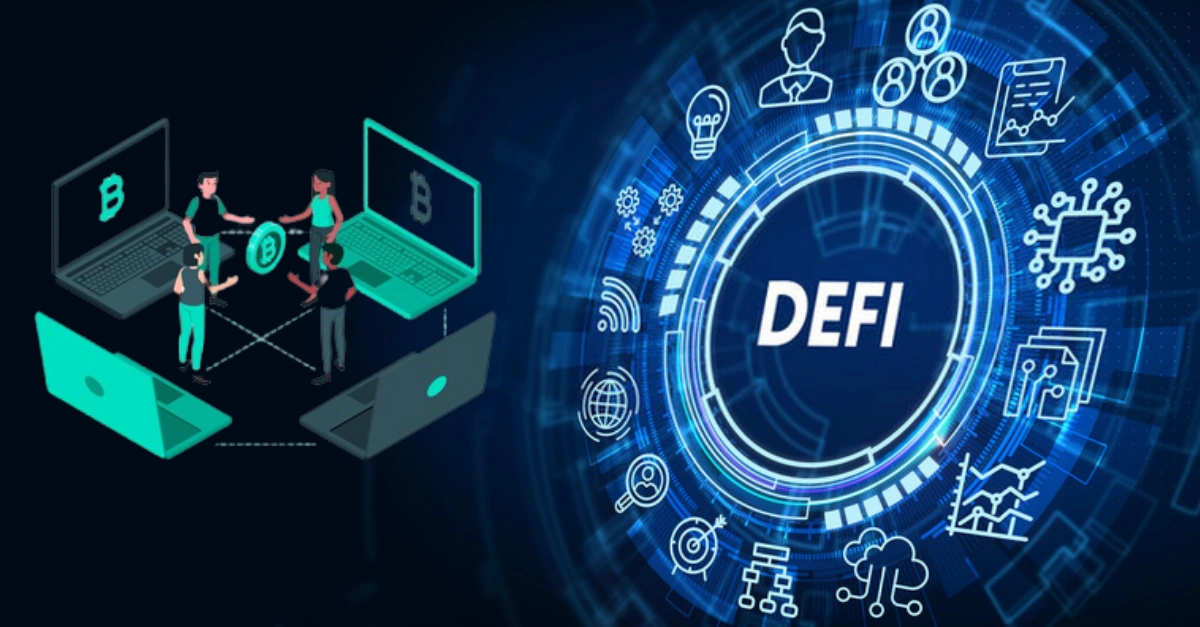
What are the two most common applications of cryptocurrency? Are you holding and trading? We bring these two together when we build a Defi lending platform.
Defi lending apps, also known as decentralized money markets, connect lenders and borrowers. The former lends crypto assets to realize long-term yields, while the latter borrow to chase short-term gains dictated by crypto volatility. So, should you start a Defi lending platform?
Decentralized finance (Defi) lending is a platform that does not have a central administration and instead provides lending and borrowing services that are managed by smart contracts. Defi loans are instantaneous, and decentralized apps (dApps) enable users to instantly connect a digital wallet, deposit collateral, and access funds.
Defi lending allows users to deposit cryptocurrency via a digital wallet and begin earning interest immediately, with interest typically compounding on a minute-by-minute basis. Most Defi lending platforms require loans to be overcollateralized by depositing 110% (or more) of the loan amount. The difference between Defi and centralized platforms is that the collateral deposited earns interest even when not
This enables crypto owners to obtain loans much faster and more securely by avoiding KYC (a requirement in traditional financial institutions). They can then freely use borrowed funds across all digital and physical borders (typical features of Defi apps).
That being said, let us debunk some of the myths surrounding Defi lending and borrowing platforms.
Smartosc solutions : BACKBASE DIGITAL BANKING, BUY NOW PAY LATER, LOS, CDP, EKYC, DIGITAL ONBOARDING
If someone takes advantage of you with a bank loan, chances are you’ll be able to resolve the situation with your bank in your favor. However, because of the non-custodial nature of the operations of a Defi lending app, security is primarily in the hands of users.
Such platforms do provide adequate security mechanisms to protect against hacking. As a result, the user frequently becomes a weak link in this equation.
Do you know how many underbanked people with no credit history own cryptocurrency? The commonly stated premise is that internet access is all you need to borrow on Aave (one of the most popular Defi protocols). What about security? People must deposit their cryptocurrency to obtain a loan, and they must deposit more than they take out.
What about actually owning crypto or making sense of such interfaces? I’m not a total newbie, but that’s a lot of contextual help and information on a single screen. Does the image below resemble a standard borrow screen? That’s according to Maker DAO’s Oasis app, which is the most popular lending protocol (TVL $16.67 billion).
That is why today’s Defi lending protocols are aimed at savvy crypto enthusiasts. Some think it’s all about timing in the market. As a result, they join to earn long-term interest by lending their digital assets. The user’s sole motivation for becoming a lender is passive income.
Others believe they can time the market and obtain loans for margin trading or other crypto-related activities. They are all well-banked.
No, it isn’t. It’s a peer-to-peer system. Aave used to be p2p back in the day. However, they quickly realized that matching lenders with borrowers takes too long and switched to pool-based lending. Deposits are made to various crypto asset pools, and borrowers borrow from these pools. There is no actual peer-to-peer matching going on.
Decentralized finance has experienced a sharp rise in popularity since 2020. Dune Analytics reports a growth to about 4 million users on Defi applications like Defi lending over the previous two years. That is almost 40 times bigger than the user pool for 2020. So, the Defi lending platform í potential. If you are also interested in blockchain development, contact SmartOSC.
Retail banking has come a long way since its inception. In the current age of…
Integrated banking technology has revolutionized the banking industry, offering many benefits that are changing how…
In the highly competitive banking industry, customer relationship management (CRM) has become a critical component…
As the banking industry evolves, customers demand more convenient and flexible banking services. This has…
Banking software has revolutionized the financial industry, enabling financial institutions to serve customers more efficiently…
Bank strategy consultant As the banking industry evolves rapidly, financial institutions must stay ahead of…